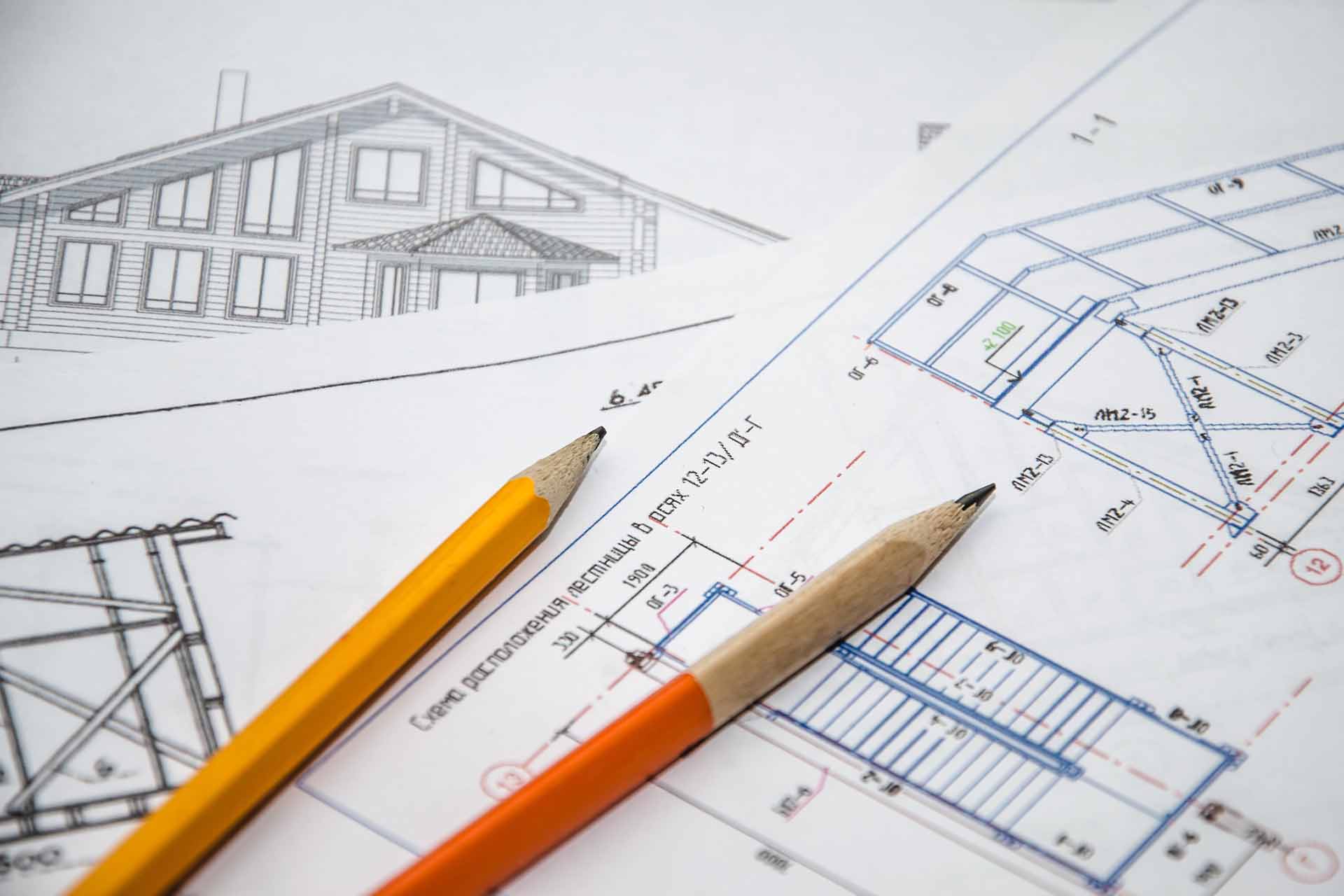Architect Guide to Sustainable Building Materials
Architect Guide to Sustainable Building Materials
Blog Article
Comprehending the Diverse Profession Paths Available for Aspiring Architect
As an ambitious Architect, you have a globe of profession courses waiting on you. Each course supplies one-of-a-kind challenges and chances to use your creativity and technical know-how. Whether you're drawn to typical design or the nuances of sustainable style, there's a specific niche that aligns with your rate of interests. Recognizing these diverse alternatives can shape your expert trip, however which instructions will you choose to discover initially?
Standard Architecture: Creating Structures and buildings
Conventional style concentrates on developing buildings and frameworks that blend functionality with visual appeal. As you explore this area, you'll value the complex balance between type and function. You'll find out to draw inspiration from historic styles, integrating components like symmetry, materials, and craftsmanship. Your styles can mirror social heritage, showcasing local traditions while satisfying modern-day demands.
You'll create abilities in composing, model-making, and website analysis, enabling you to imagine and communicate your ideas properly. Involving with customers, you'll require to comprehend their vision and convert it right into practical styles.
Additionally, building codes and sustainability practices are vital in your work, ensuring your frameworks are ecologically friendly and safe. As you expand in your occupation, you'll locate chances in property, industrial, or perhaps reconstruction tasks, each offering one-of-a-kind difficulties. Embracing typical architecture leads the way for a fulfilling career that pays tribute to the past while shaping the future.
Urban Planning: Forming Areas and Public Spaces
As a hopeful Architect, you can play a vital role as a city coordinator, transforming just how neighborhoods function and connect. By utilizing community interaction strategies, you'll ensure that homeowners have a voice fit their environment. And also, integrating lasting style principles will aid develop spaces that not just fulfill today's requirements however likewise shield the future.
Function of Urban Planners
While many might assume of engineers as the single dreamers behind structures, metropolitan coordinators play a necessary duty in forming the more comprehensive landscape of areas and public rooms. By teaming up with numerous stakeholders, you'll aid make parks, transport systems, and residential locations that advertise social communication and accessibility. Your proficiency in spatial design and community characteristics enables you to envision future development while maintaining cultural heritage.
Community Engagement Strategies
Effective neighborhood involvement techniques are crucial for city coordinators to assure that the voices of residents are heard and valued in the preparation procedure. To promote meaningful dialogue, you ought to focus on open discussion forums and workshops where community participants can express their concepts and issues. By actively paying attention and including responses, you'll create spaces that reflect the neighborhood's demands, inevitably leading to even more lasting and successful urban environments.
Sustainable Design Principles
When creating city rooms, including lasting layout principles is crucial for developing settings that grow both environmentally and socially. You must begin by concentrating on energy effectiveness, utilizing products that lower waste and advertise recycling. Take into consideration incorporating environment-friendly areas, like parks and yards, to boost biodiversity and boost air high quality. Promoting walkability and public transport can decrease reliance on autos, fostering a much healthier area.
Creating with water preservation in mind is also vital-- think of rain yards and permeable surface areas to handle stormwater. Involving community members throughout the preparation procedure guarantees that the spaces you produce meet their requirements and urge social communication. By accepting these principles, you'll add to lively, sustainable metropolitan landscapes that benefit every person.

Landscape Architecture: Creating Sustainable Exterior Settings
As you check out landscape design, you'll discover important layout concepts that produce stunning and functional outdoor rooms. Lasting practices play an important duty in guaranteeing these atmospheres thrive while decreasing ecological impact. And also, you'll find a selection of profession opportunities that permit you to make a real distinction in exactly how people interact with nature.
Layout Principles in Landscape
Understanding layout concepts in landscape architecture is vital for developing lasting exterior settings that harmonize with nature. You'll need to consider aspects like range, equilibrium, and percentage to guarantee your designs feel cohesive and welcoming. Additionally, pay interest to seasonal adjustments, making with products that enhance the environments year-round.
Lasting Practices Introduction
Lasting methods in landscape design not only concentrate on aesthetics yet also focus on eco-friendly health and resource conservation. By integrating native plants, you enhance biodiversity and reduce the demand for chemical plant foods and chemicals. Carrying out reliable irrigation systems helps conserve water and lessens overflow, securing nearby communities. You can make rooms that advertise dirt wellness, such as practicing and using natural materials permaculture concepts. Furthermore, incorporating green facilities, like rain yards and more info porous sidewalks, aids in stormwater monitoring and minimizes urban warm. When you produce outdoor environments with sustainability in mind, you add to a much healthier planet and give areas that cultivate neighborhood connection. Ultimately, these techniques ensure your layouts benefit both individuals and the environment for many years ahead.
Career Opportunities Expedition
With a strong structure in sustainable techniques, landscape architecture supplies a selection of profession paths that enable you to make a meaningful effect on the setting. You can work as a landscape developer, developing cosmetically pleasing and functional outdoor areas, or specialize in eco-friendly repair, assisting to revive broken ecosystems. Urban planners typically work together with landscape designers to develop environment-friendly spaces in metropolitan settings, improving city livability. If you're enthusiastic regarding education and learning, take into consideration ending up being a landscape style educator, inspiring future generations. Additionally, you might collaborate with nonprofits concentrated on ecological sustainability or engage in research study to innovate new techniques. Each course not just shapes attractive atmospheres however also fosters a much healthier world for future generations.
Sustainable Layout: Concentrating On Eco-Friendly Practices
As you explore your career in style, embracing environment-friendly practices can establish you apart in an affordable area. Sustainable style focuses on developing buildings that lessen ecological effect while boosting resident health. By integrating eco-friendly products, energy-efficient systems, and sustainable structure techniques, you'll add to a greener future.
Start by obtaining knowledge of eco-friendly accreditations like LEED or BREEAM, which can strengthen your credentials. Think about just how natural light, air flow, and thermal effectiveness can maximize design. Work together with designers and environmental specialists to innovate remedies that reduce waste and save sources.
Do not fail to remember the significance of area involvement-- appealing regional stakeholders can motivate layouts that integrate with the environment. As clients progressively focus on sustainability, your competence in eco-friendly practices will certainly not only draw in jobs however additionally accomplish your enthusiasm for liable style. Embrace this essential element of the occupation, and enjoy your profession grow.
Historical Conservation: Shielding and Recovering Social Heritage
While you start on your building journey, take into consideration the crucial duty of historical conservation in preserving our cultural heritage. This field focuses on the defense and remediation of considerable buildings, sites, and structures that inform the tales of our past. By participating in historic preservation, you'll help safeguard the building heritage that shapes community identity.
As a historical preservation Architect, you'll examine historical importance and assess the problem of structures. You'll function carefully with chroniclers and guardians to ensure authentic reconstruction methods are used. This career course permits here you to mix creativity with research study, allowing you to develop solutions that value original products and craftsmanship.
Your work not only contributes to sustainability by recycling existing structures however likewise cultivates a feeling of pride within neighborhoods. Embracing this path will certainly aid you end up being a guardian of background, preserving the tales and appearances that enhance our lives.
Inside Design: Enhancing Indoor Spaces
Historical preservation and indoor style both share a commitment to boosting the built atmosphere, yet they concentrate on various facets. While historic preservation stresses keeping a structure's historical and cultural worth, indoor design absolutely nos in on optimizing interior rooms for functionality and click here appearances.
As an aspiring Architect, you'll find that interior design permits you to mix creativity with technical skills. You'll create rooms that not only look good however likewise advertise convenience and efficiency. This area includes understanding how light, shade, and materials communicate within a space, influencing state of mind and functionality.
You'll deal with different tasks, from household homes to commercial offices, guaranteeing that each environment meets the demands of its passengers. By focusing on customer experience, you can change insides right into functional and motivating areas, making a significant influence on just how people engage with their environments. Accept the chance to improve interior settings and form the way individuals live and function.
Industrial Style: Merging Performance With Appearances
Commercial layout plays an important role in creating items that perfectly mix aesthetic appeals with performance, guaranteeing that what you use day-to-day is not just visually attractive however additionally sensible. As a hopeful Architect, you can engage yourself in this area, concentrating on creating everything from furnishings to customer electronic devices. Your work involves recognizing individual demands, products, and manufacturing procedures, enabling you to develop ingenious services that boost daily experiences.
In industrial layout, you'll often collaborate with engineers, marketers, and producers, ensuring that your styles are not just beautiful yet also viable. This profession path provides a dynamic atmosphere where creativity fulfills usefulness, making it a satisfying choice for engineers interested in forming the products of tomorrow.
Frequently Asked Questions
What Educational Qualifications Do I Required to Become a Designer?
To become an architect, you'll require an expert level in design, typically a Bachelor's or Master's. In addition, you'll have to finish a teaching fellowship and pass the Architect Registration Examination to exercise lawfully.
Exist Certification Requirements for Various Building Occupation Paths?
Yes, there're qualification demands for different building courses. Architect. You'll require to pass exams, complete teaching fellowships, and in some cases pursue specialized training, depending on your picked emphasis, like landscape design, metropolitan style, or historic conservation
What Software Skills Are Important for Architects Today?

How Can I Gain Practical Experience While Examining Design?
You can gain useful experience by interning at architectural firms, taking part in layout competitors, offering for area tasks, or teaming up with schoolmates on real-world tasks. These possibilities boost your skills and develop valuable links in the industry.
What Work Opportunities Exist Outdoors Traditional Architecture Firms?
You can check out various work possibilities outside typical architecture firms, like city preparation, indoor design, landscape style, building administration, genuine estate development, or even roles in sustainability consulting. Each offers special challenges and incentives.
Whether you're drawn to standard style or the subtleties of sustainable layout, there's a niche that aligns with your passions.When designing city rooms, including sustainable layout principles is vital for producing atmospheres that flourish both environmentally and socially.As you discover landscape style, you'll find vital layout principles that produce stunning and functional outdoor areas.Understanding style principles in landscape style is important for developing sustainable outside environments that harmonize with nature.In commercial layout, you'll usually team up with makers, designers, and online marketers, guaranteeing that your styles are not only stunning but likewise practical.
Report this page